Learn how to mirror your Android phone screen to your Mac wirelessly or using a USB cable without rooting your device.
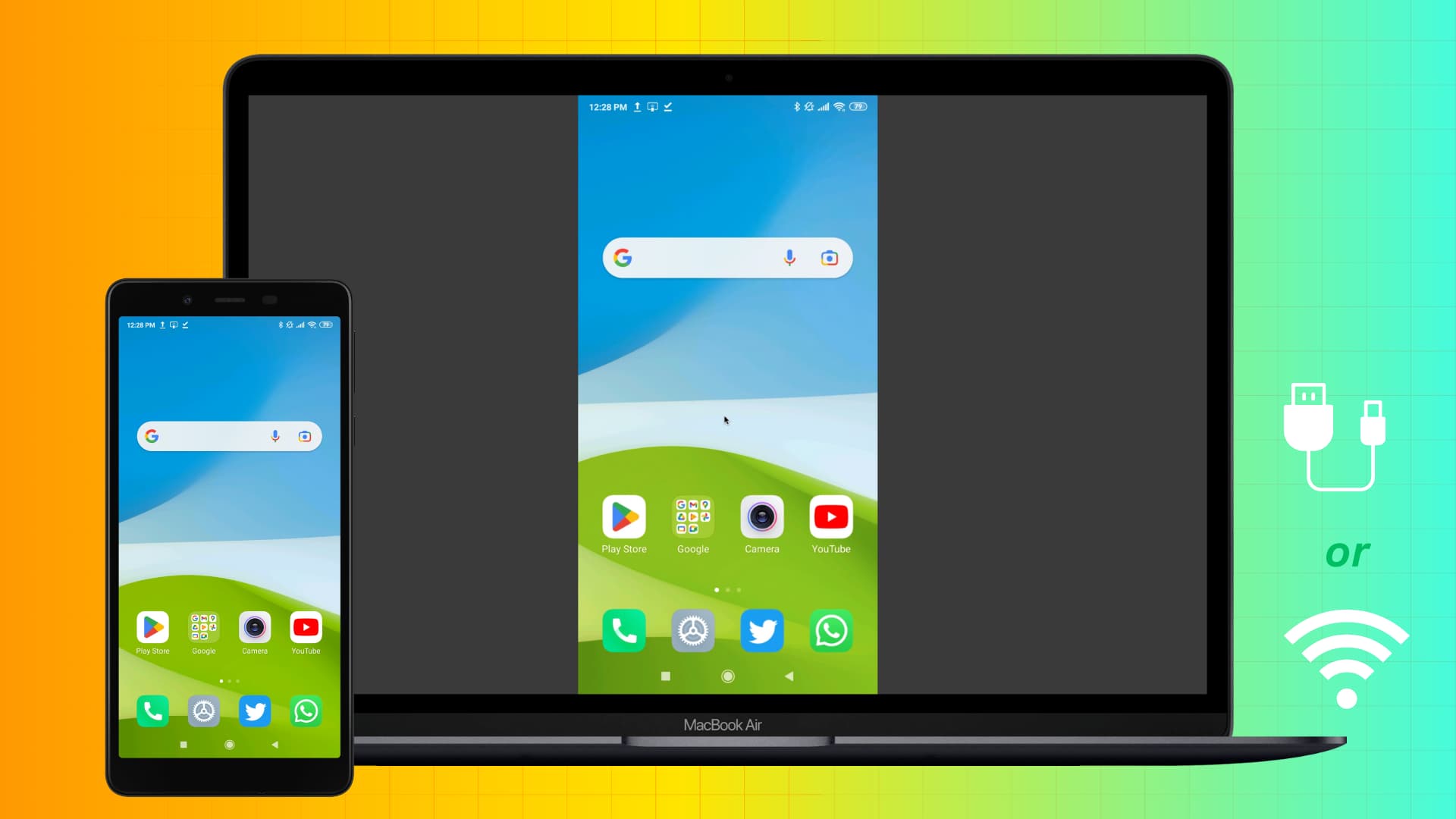
It takes just three taps on iOS to wirelessly mirror your iPhone or iPad screen to your Mac. Reproducing your Android screen on a Mac isn’t quite that simple, but it’s not difficult either, and we’ll guide you through the process using free apps. This method works for Samsung, Oppo, Vivo, OnePlus, Xiaomi, Redmi, Realme, Lava, Motorola, Nothing, Google Pixel, and almost all other Android phones and tablets.
Since Android devices lack a native option to mirror the screen to macOS, some apps may require extra steps before they can be used. However, with the methods below, you:
- Don’t have to turn off Firewall or FileVault on your Mac.
- And you don’t have to reduce the overall security of your Mac.
Wirelessly mirror your Android phone screen to Mac
You can cast Android screen using X-Mirage or AirDroid.
Using X-Mirage
- This method works if your Android phone has the Screen Cast feature.
- It’s easy to set up and works fairly well for free. After the 15-day trial, you’ll have to buy its full version.
- You don’t need to download an app on your Android phone.
1) Make sure your Android phone and Mac are connected to the same Wi-Fi network or Personal Hotspot.
2) Download and open the X-Mirage app on your Mac, and allow it the necessary permissions.

3) Open the Quick Settings panel on your Android phone by swiping down from the top of the screen. Swipe down once again to expand it, and then swipe left to find and tap the Screen Cast button.
4) You should see X-Mirage [Your Mac’s name] as the potential destination to cast your Android screen. Select it.
5) Then tap Start now on the “Start recording or casting” popup.

Your Android phone screen should now appear in a vertical window on your Mac screen.

I found that this tool cropped out the edges of my Android phone screen, but your experience may vary. Once you’re done casting, open the Quick Settings panel on your Android phone and tap Screen Cast, followed by Disconnect.

Using AirDroid
- You don’t have to enter developer mode for the screen cast.
- You don’t have to disable any security settings on your mobile phone.
- I prefer this mirroring process over the wired method (explained next).
1) Connect your Android phone and Mac to the same Wi-Fi network.
2) Download the AirDroid Cast Now desktop client on your Mac and install it like any other app. Next, download and install AirDroid Cast-screen mirroring on your Android phone from the Google Play Store.
3) Launch AirDroid Cast on your Mac, and you’ll see the Wireless section with a QR code and a nine-digit numeric code.
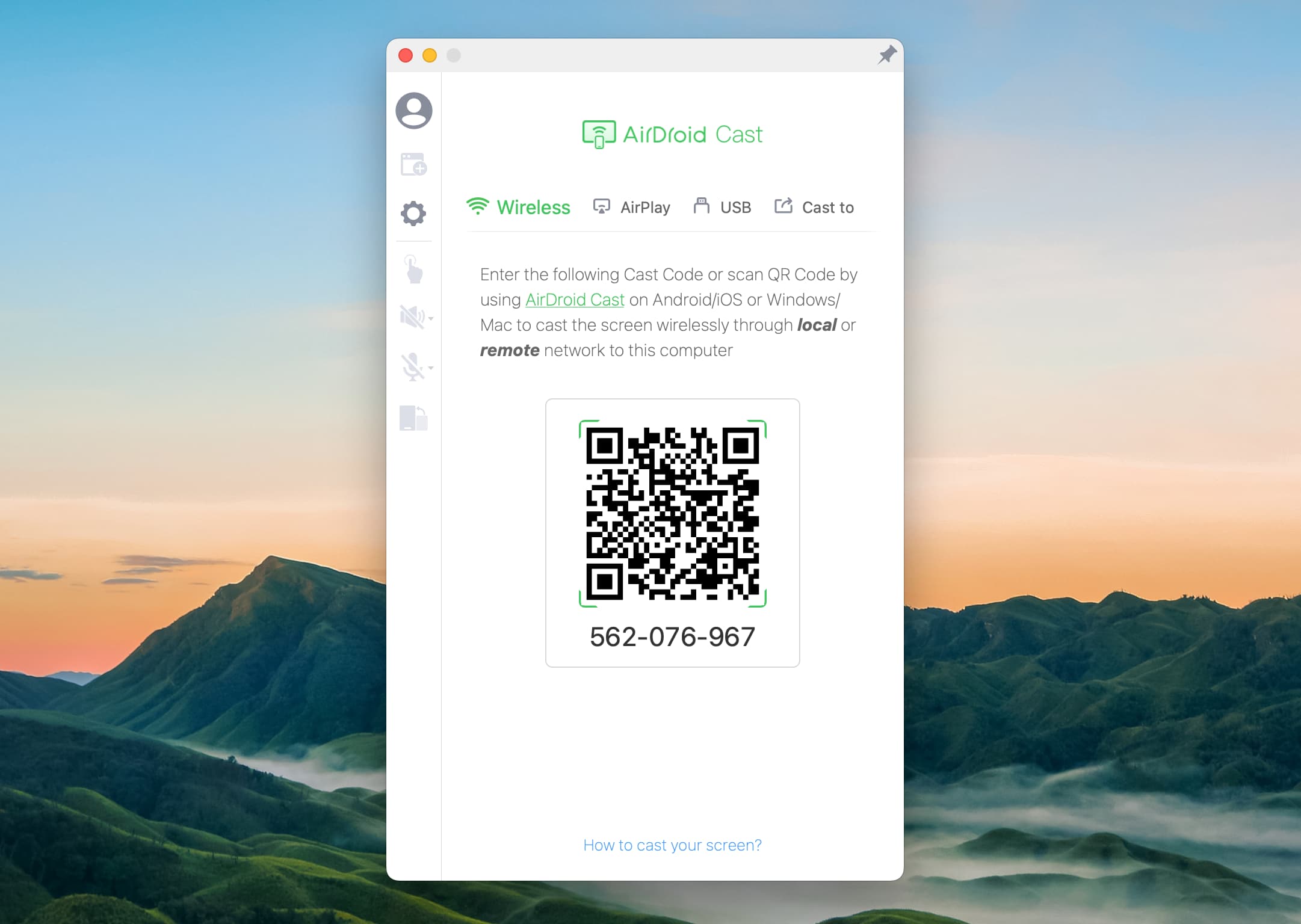
4) Now, open AirDroid Cast on your Android phone and scan the QR code or enter the nine-digit code you see on your Mac, and then hit Start Casting.
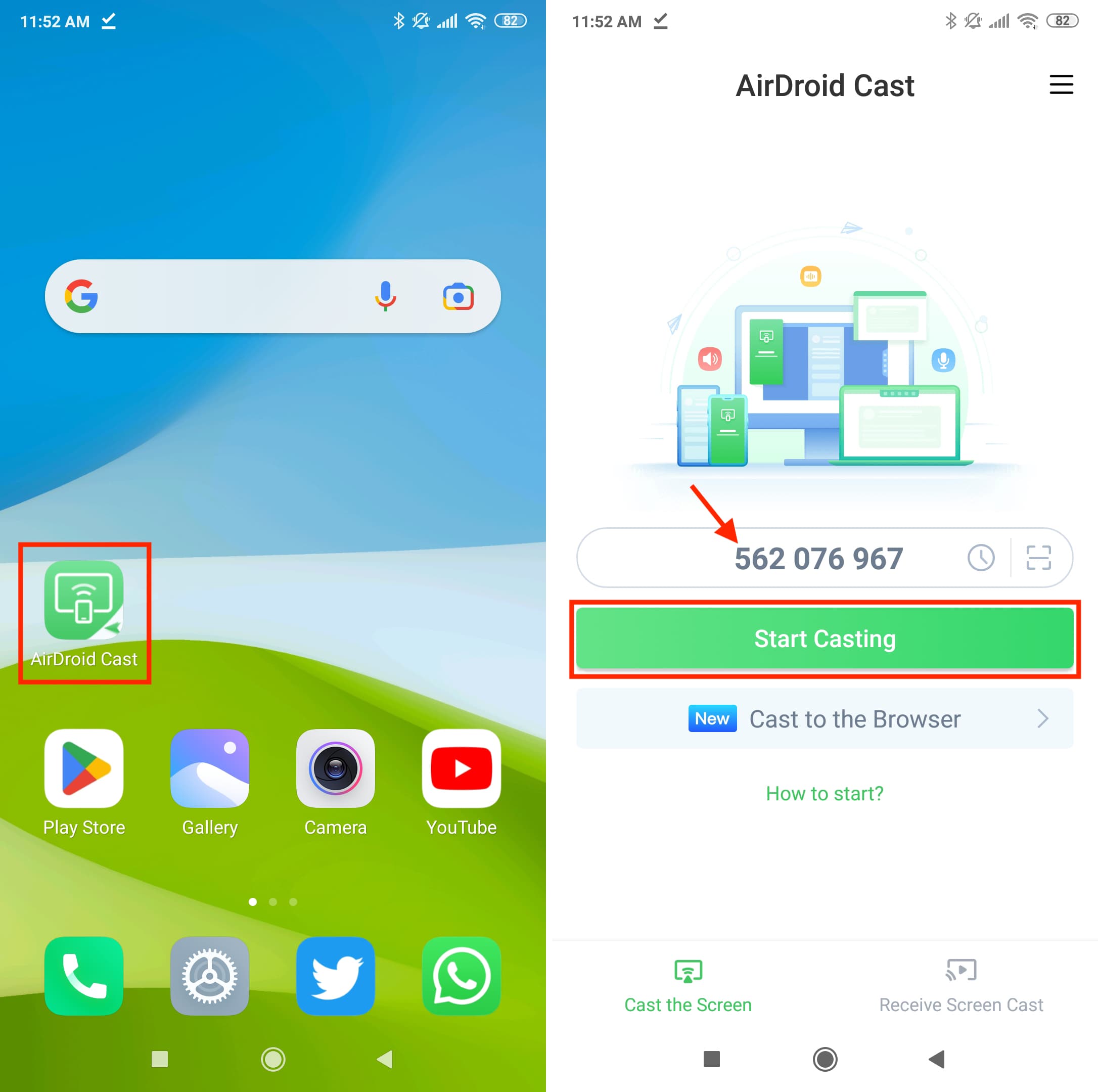
5) Attend to the pop-ups you get on your Mac or phone and click Allow to allow the connection.

After a few seconds, tap Start Now to allow the app to mirror your Android phone screen to Mac.
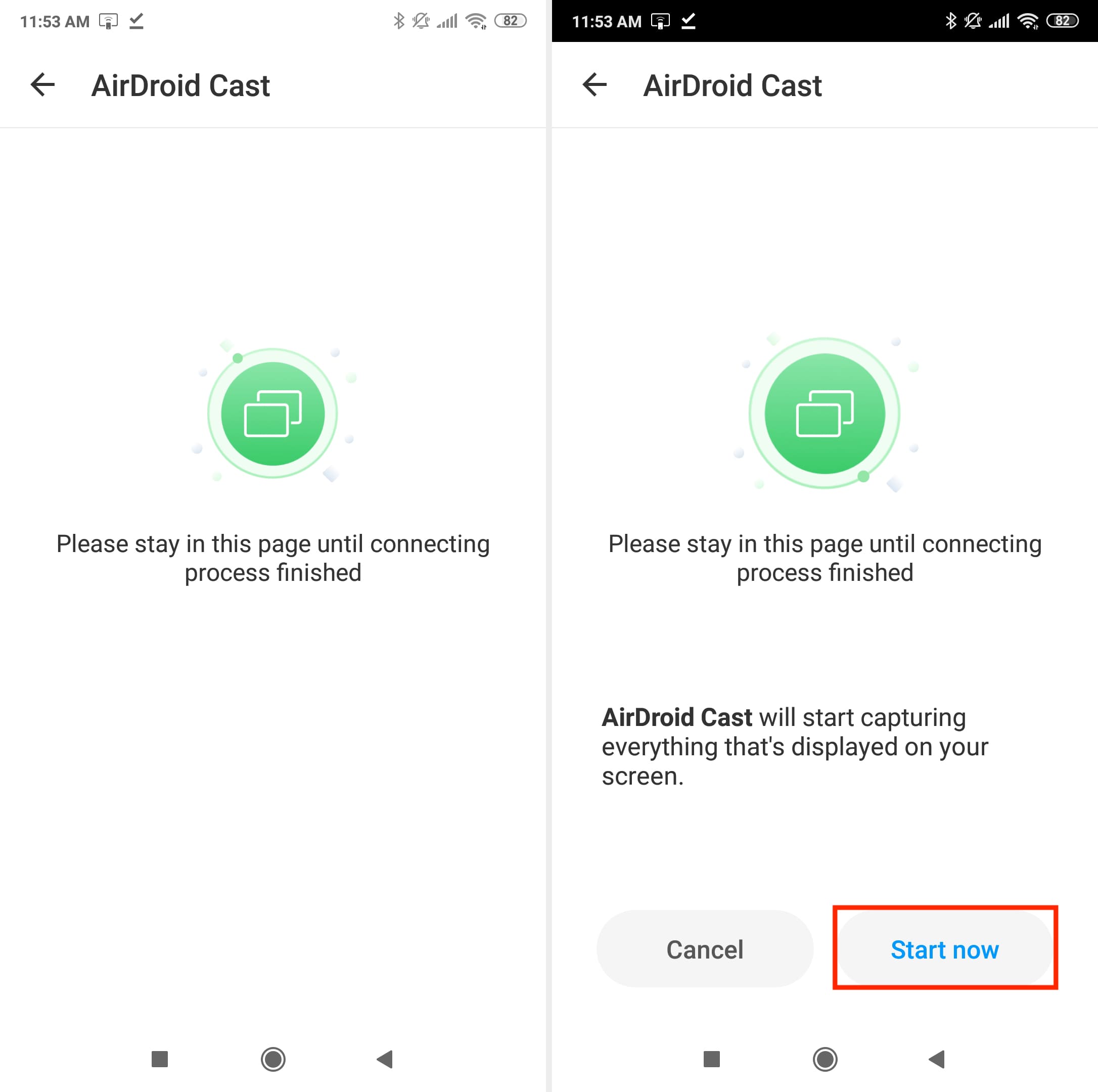
6) Now, you can hit the Home button on your phone to go to the Home Screen, and from there, open other apps. Everything from here will mirror onto your Mac’s screen.
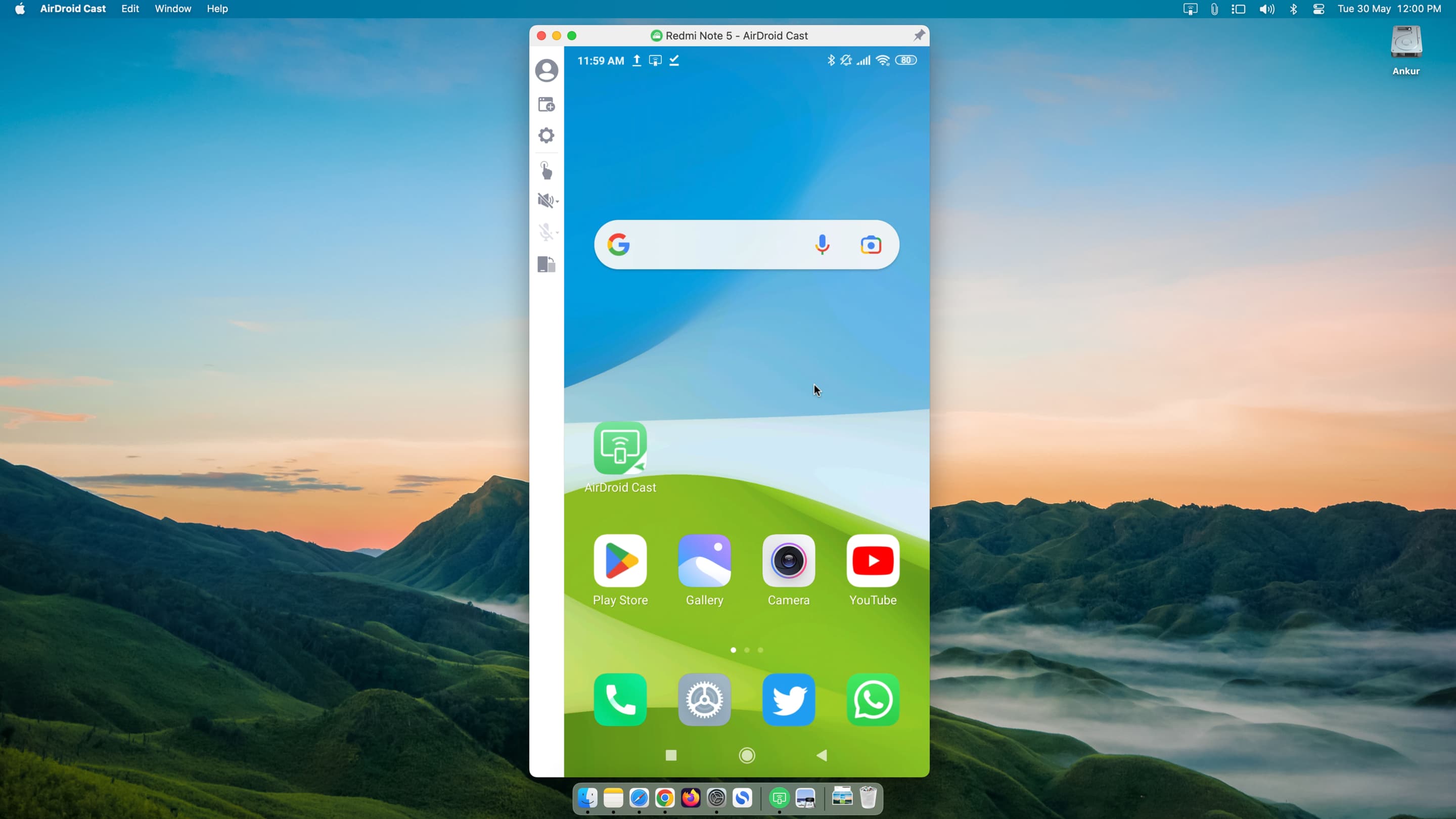
The AirDroid Cast app on Mac displays a slim sidebar with useful tools. While a few features require the premium version, others allow access to app settings, screen rotation, and more.
To enter full-screen mode and hide the left sidebar, click the green button in the AirDroid Cast app on Mac.
Stop mirroring: Open the AirDroid Cast app on your Android phone, and from here, you can pause the mirroring. However, if you want to stop mirroring, tap the X button in the top left corner and tap OK on the End casting alert.
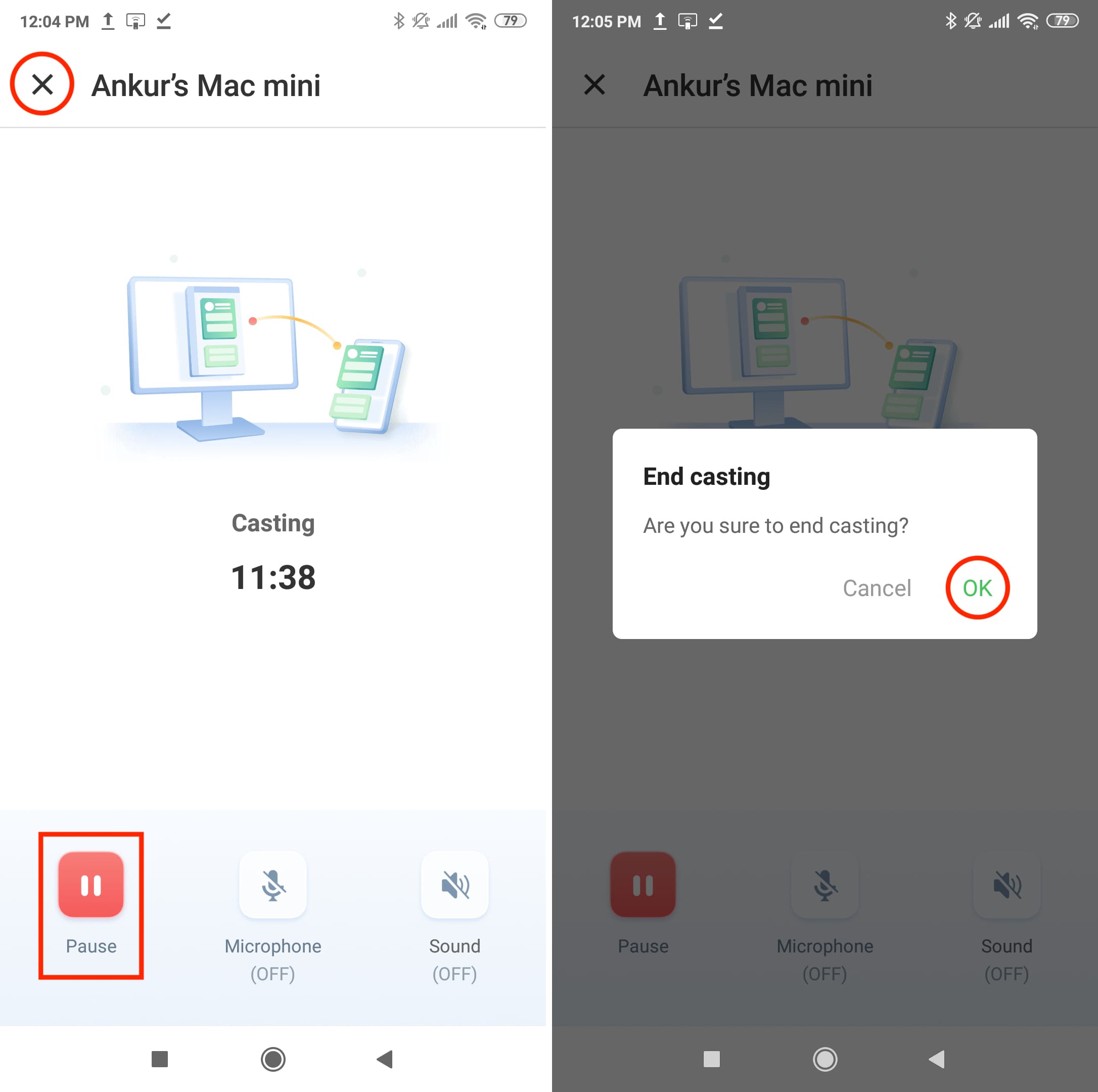
Mirror your Android phone screen to Mac using a wired connection
Highlights:
- You can control your Android phone from your Mac while casting. For example, you can use your Mac’s mouse and trackpad to open apps on your Android phone.
- You’ll have to enable Developer Mode on your Android phone and enable a bunch of sub-settings. Please proceed at your own risk.
- You don’t have to connect your Mac and Android phone to a Wi-Fi network or maintain an active internet connection.
- A wired USB connection is generally more reliable than wireless methods.
Step 1: Enable Developer Mode
The exact steps to enable Developer options may differ depending on your Android phone brand, but for most, you can go to phone Settings > About phone or About device, and then follow these steps:
- Samsung: Go to Software information, tap Build number seven times, and enter your device passcode.
- Pixel, Motorola, and other phones with stock or almost stock Android: Tap Build Number seven times until you see ‘You are now a developer!‘
- Xiaomi: Tap MIUI version a few times until you see ‘You are now developer. Stop tapping.’
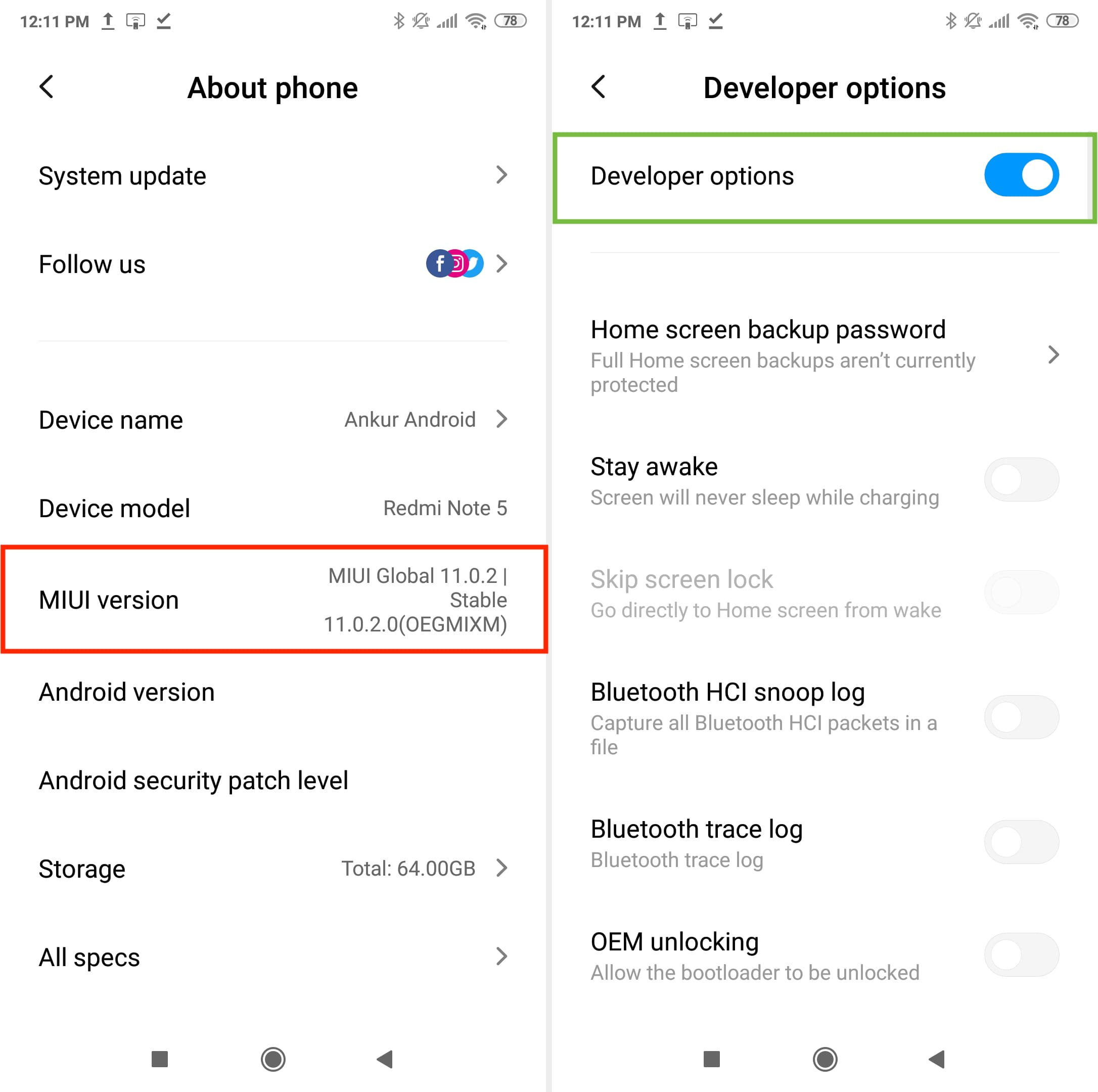
Step 2: Enable other settings
The app we’re using below will show you which developer sub-settings to enable after you turn on Developer Mode. You’ll probably have to go to Developer options in phone Settings. On some phones, the Developer options are buried under Additional settings or More settings of the Settings app. Once you’re there:
- Enable Install via USB
- Enable USB debugging
- Enable USB debugging (Security settings)
- Turn off Verify apps over USB (Note: I didn’t turn it off, and screen mirroring still worked on my Xiaomi phone.)
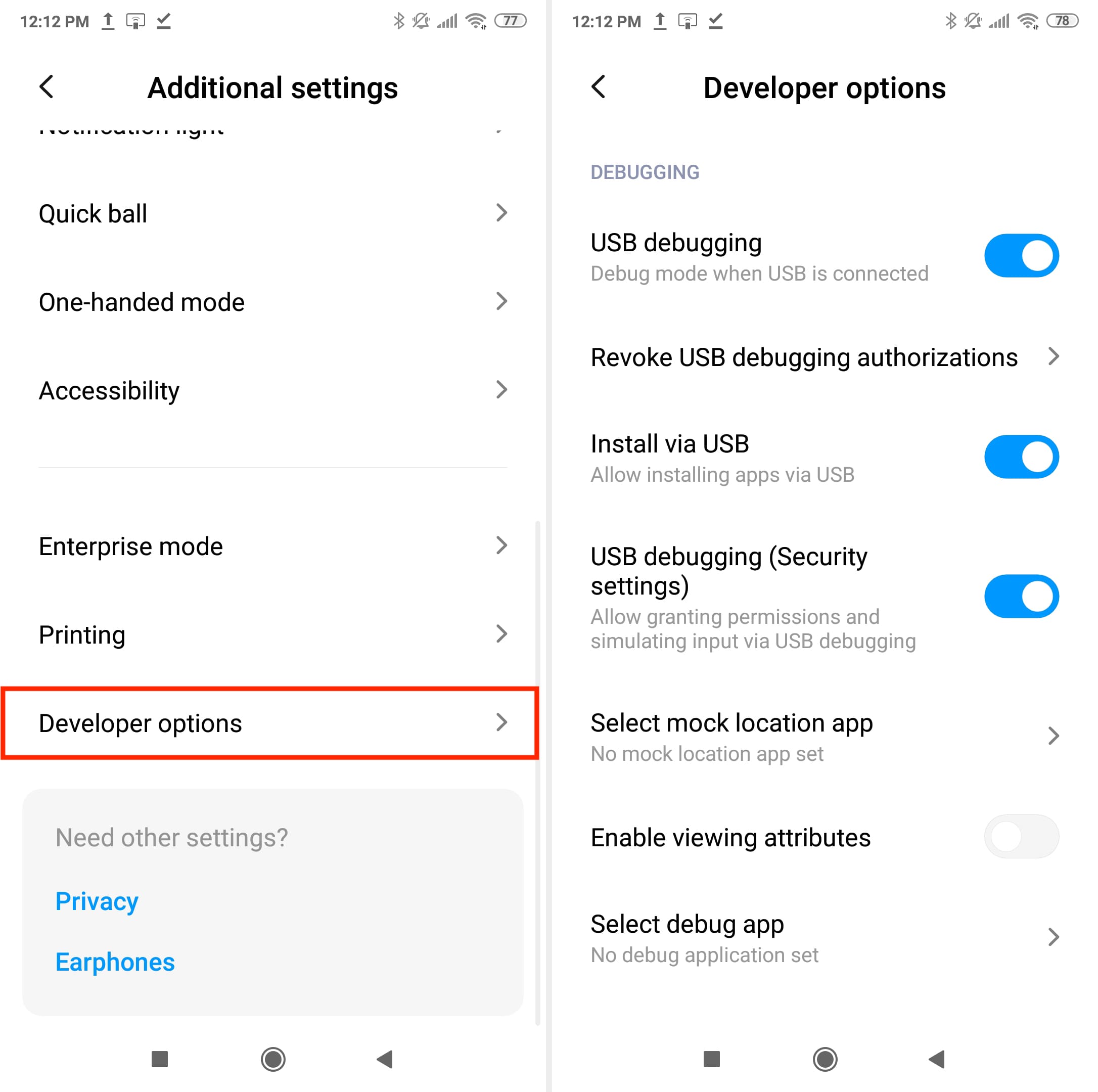
Step 3: Get the Vysor app and open it
Vysor is a free app that allows you to share your Android phone’s screen with your computer. Get it from the Google Play Store on your phone and from the official website for your Mac.
Open Vysor on your phone and make your way through its initial screens. You’ve already enabled the settings it requires. Still, if it asks you to do something else, tap Open Developer Options and enable or disable those options.

Step 4: Connect your phone to your Mac
Use a USB cable to connect your Android phone to your Mac. In most cases, you don’t have to pay attention to the alert that appears on your phone after connecting it to your computer with a cable.
Step 5: See your Android phone’s screen on Mac and control it
Open the Vysor app on your Mac.
Once the wired connection is successful, you’ll see your Android phone name in the Vysor app on Mac. Click it or click the View Device triangle button. The Vysor Mac app will take a short while to finish the reinstallation.
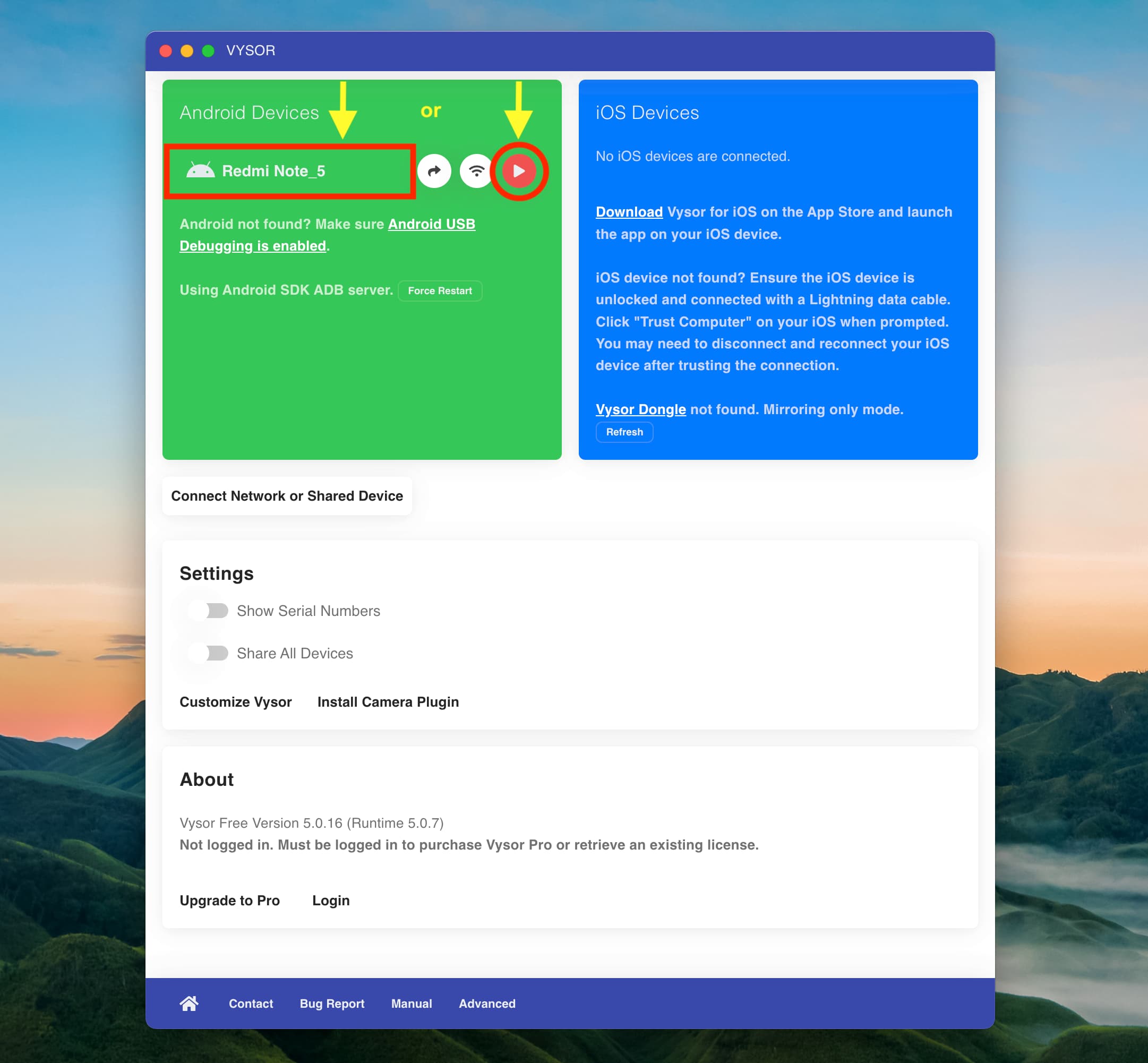
After that, you should see your Android phone’s screen on your Mac.
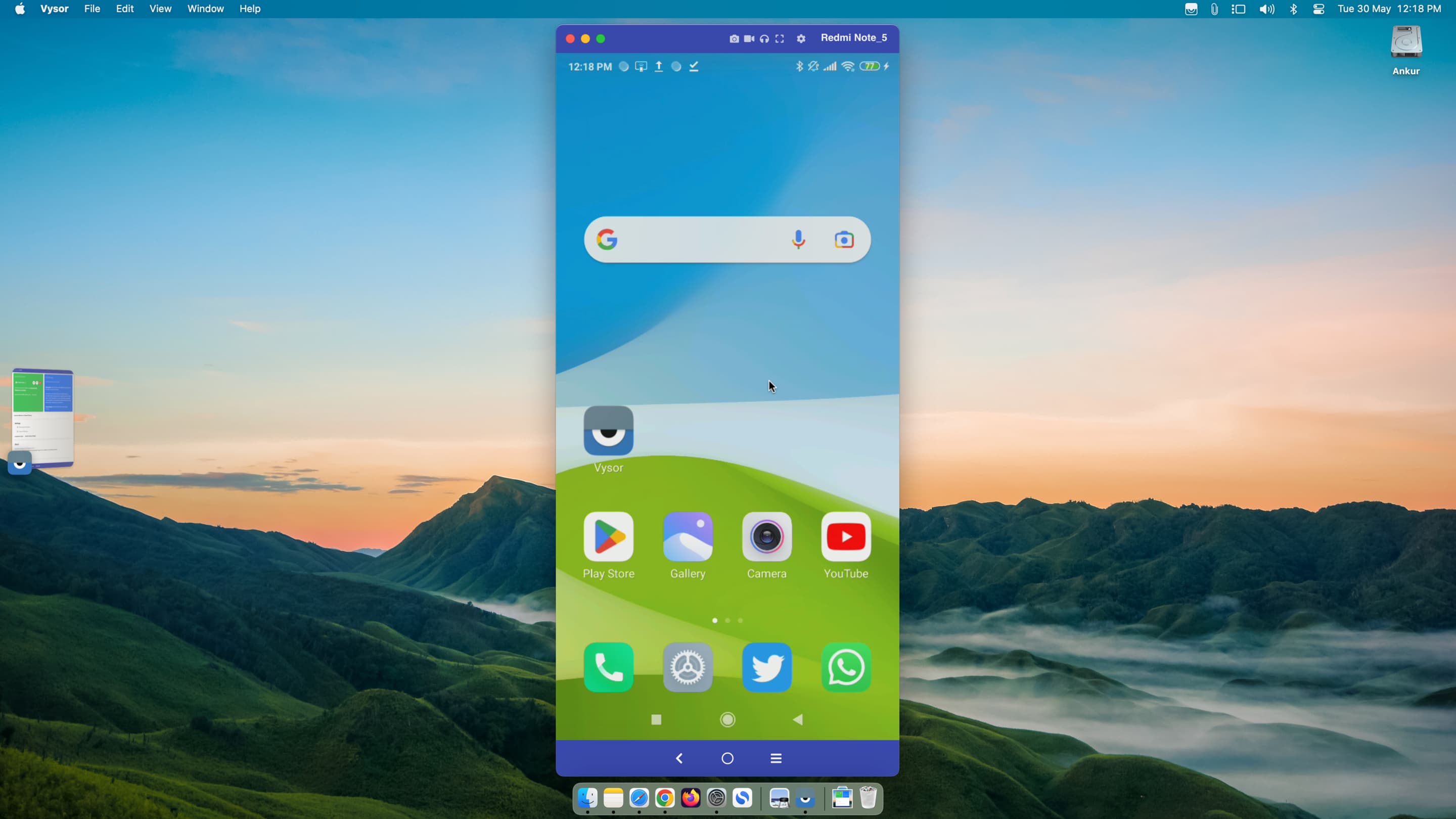
You can click the Android icons on your Mac to open apps, go home, view recent apps, and more.
The thin row of icons at the top of the screen offers options to take screenshots, record the phone screen, enter full screen, and more, though most require upgrading to the pro version. You can also go to Settings to upgrade the mirroring quality if you have a license.
Stop mirroring your phone: You can simply unplug your Android phone from your Mac to stop mirroring. Alternatively, you can quit the Vysor app on Mac.
Other Android phone tips: